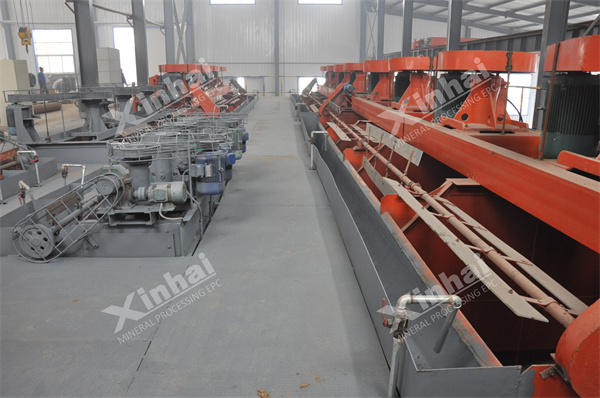In the development and utilization of mineral resources, the separation of chalcopyrite and pyrite is crucial, which not only relates to the recovery of associated valuable elements, but also has significant implications for improving the comprehensive utilization rate of resources. After long-term research and practice, five main flotation separation processes have been developed.
This process is mainly aimed at blocky copper bearing pyrite with high sulfur content in the raw ore. Firstly, finely grind the ore to ensure the appropriate particle size is achieved. In the flotation stage, inhibitors are used to suppress the flotation of pyrite, thereby effectively separating copper minerals. In the end, the tailings after flotation are sulfur concentrate.
The direct flotation separation process has the advantages of simple operation and high efficiency, which can quickly obtain sulfur concentrate, especially suitable for processing ores with high sulfur content. However, when the sulfur content of the ore is extremely high, it is necessary to adjust the dosage and operating conditions of the inhibitor to ensure that copper minerals can be effectively separated.

When the direct flotation separation process cannot obtain qualified sulfur concentrate for block shaped copper bearing pyrite, the preferred flotation separation process becomes a suitable choice. In this process, copper concentrate is first obtained by flotation, and then the copper tailings are subjected to sulfur flotation to obtain sulfur concentrate. This process can also be used to process impregnated copper sulfide ore.
It should be noted that when flotation copper concentrate, the amount of inhibitor should be strictly controlled, which can save the amount of activator required for subsequent flotation of pyrite. In addition, according to the particle size characteristics of the ore, the coarse concentrate or medium ore should be re ground to further improve the flotation index of copper.
For the case where the raw ore is a leaching type copper sulfur ore, the beneficiation plant usually adopts a mixed priority flotation separation process. Firstly, under the conditions of coarse grinding particle size and low slurry alkalinity, the copper sulfur mixed concentrate is floated out. Then, lime and other inhibitors are added to the slurry to regrind the mixed concentrate, and the upward movement of pyrite is suppressed in the high alkalinity slurry. Finally, copper concentrate is obtained by flotation.
This process can significantly improve the economic efficiency of the beneficiation plant, but requires high precision in operation control. Only by accurately controlling the parameters of each link can we ensure effective separation of copper and sulfur and high-quality concentrate production.
When the sulfur content of the ore is high and the gangue minerals are mainly concentrated in the fine mud, the mud sand separation process comes into play. In this process, the copper sulfide ore is first roughly ground, and then sorted by mud and sand to effectively separate the mud and ore, thereby reducing the negative impact of mud on copper flotation.
This can significantly improve the quality of copper concentrate and increase the production efficiency of sulfur concentrate. This process ensures higher copper mineral recovery and optimizes the grade of sulfur concentrate by reducing fine particle interference during flotation separation. For ores with high content of fine mud, the mud sand separation process is particularly effective, which can improve the stability and economy of the entire flotation system.
The combined process of beneficiation and metallurgy is suitable for situations where copper sulfide ore is severely oxidized and contains a large amount of copper sulfate. Firstly, after crushing the raw ore to an appropriate particle size, the ore is washed and deslimed. After solid-liquid separation of mineral slurry, copper ions in the liquid phase can be replaced by sponge iron, or copper ions in the liquid phase can be recovered by ion exchange, extraction, electrodeposition, and other methods. After washing, the ore enters the flotation operation for separation.
This process divides the treatment of oxidized ore into two steps: first, removing the sludge by washing the ore to reduce the interference of fine sludge on subsequent flotation; Then, the copper ions in the liquid phase are recovered through a combined selection and smelting method, further improving the copper recovery rate. The combined process of beneficiation and metallurgy can not only treat ores with severe oxidation, but also significantly improve the recovery efficiency of copper minerals and optimize the overall treatment effect.
In summary, each of the five flotation separation methods for chalcopyrite and pyrite has its unique application conditions and operational requirements. With the continuous advancement of technology, these flotation separation processes are also constantly being improved and optimized. Understanding and mastering these process flows is of great significance for improving mineral processing efficiency and resource utilization, and can provide strong support for the efficient development and utilization of mineral resources.